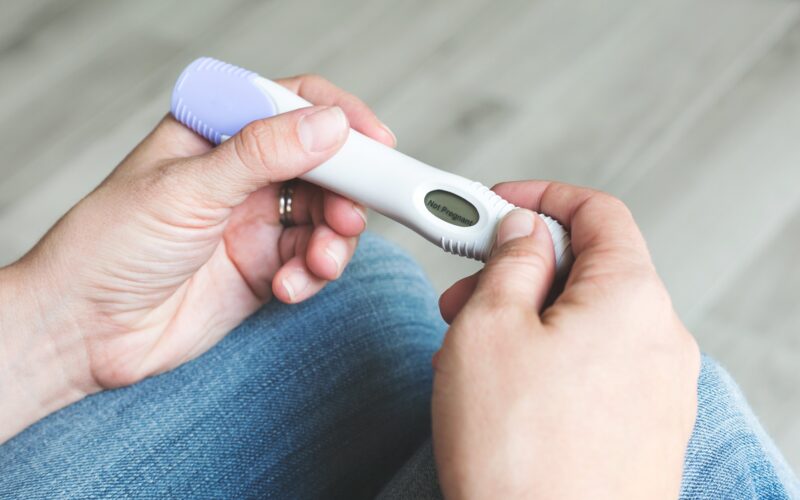In previous articles, we have shown that many Fertility Awareness-Based Methods (FABM) are an effective alternative to contraceptives on the market for postponing pregnancy. However, as with other forms of birth control, sometimes couples using a FABM to avoid a pregnancy do end up pregnant. For many of those couples, this new pregnancy may be a surprise, not a matter of life and death; for others, having an unplanned pregnancy may put significant strain on their marriage, dangerously stretch their finances, and may even put the mother’s life in jeopardy.
In this article, we want to look at ways that couples may take the efficacy of their Fertility Awareness-Based Method up a notch. The recommendations here could also be used by those couples who are just beginning with fertility awareness and are nervous about trusting their method’s effectiveness.
Don’t wing it: Find an instructor
The very first thing to ensure that a chosen Fertility Awareness-Based Method will be effective is to choose a FABM that fits one’s lifestyle and for which one can be taught by a trained FABM instructor. Working closely with the instructor will ensure that both partners master the method and gain confidence in reading their fertile signs.
It is important to be diligent with charting and precise in interpreting the rules of your particular FABM. An instructor can help make sure both partners understand the method and have had any and all questions addressed. If the method is not a good fit for a couple, it will be much harder for them to follow the necessary protocols. This sometimes means that couples will need to learn a different method if the first one they try proves too cumbersome, or isn’t a good fit for their current state of fertility (e.g., postpartum), or current family planning goals
Add a post-ovulatory buffer day
Once the method has been fully understood, the next way to increase method effectiveness is to add an additional day or two of abstinence to the method’s rule for determining the post-ovulatory infertile phase (or what is referred to as Phase 3 in some methods).
It’s important to remember that all modern methods are based on the same science and probabilities of conception. The goal for each method is to utilize the signs they teach to identify the fertile window with maximum effectiveness, and minimum number of days of abstinence required for the couple. But adding an extra day will provide an additional buffer between when ovulation happened and when the couple resumes sexual relations. So if a method requires a couple to wait 4 days after identifying the peak day to resume relations, a couple can always feel free to wait until the fifth day for additional “insurance” against a potential pregnancy. While increasing the number of days of abstinence can be challenging, adding an additional “buffer day” is a good way to increase method effectiveness for any FABM–especially when the stakes are high.
Avoid intercourse until ovulation is confirmed
Another way to increase method effectiveness is to avoid intercourse altogether during the pre-ovulatory infertile time (known, for example, as Phase 1 in the Sympto-Thermal Method), and only have relations after ovulation has been confirmed by the post-ovulatory rule.
How does this help? In most cycles, following menstruation, there will be several dry days where pregnancy is not possible due to the vagina’s natural acidity. This natural acidity is overcome by the presence of cervical fluid (thus, why sperm will die in a few hours or less if no mucus is present, but can live up to 5 days if it is). Sometimes a woman can miss the first signs of cervical mucus; if she does, and ends up ovulating within 5 days of that first sign of mucus, she can conceive if the couple engaged in intercourse during this window. By waiting until ovulation has occurred and pregnancy is no longer a possibility, the method is extremely effective. But following this approach does come with a major challenge: a couple with a peak day around Day 14 would be waiting close to three weeks to have relations. If a couple has an even later peak day, the wait could be longer still.
For couples practicing the Sympto-Thermal Method, consider the Temperature-only rule for determining the beginning of the post-ovulatory phase developed by Dr. G.K. Doering for his temperature-only method. In his research, it had a 100% method effectiveness and a user effectiveness of 99.2% (1). For couples well-trained in another method who would be interested in adding the temperature sign as a double check, you can contact a Sympto-Thermal teacher and explain your situation. It’s highly unlikely you would need to switch methods, but they can explain how the temperature sign relates to what is already being observed.*
Go the extra mile: Test for progesterone
One final way to increase the effectiveness of your fertility awareness method is by measuring hormone metabolites to check whether ovulation has occurred. This could be done via a blood draw several days after Peak has been identified, which can confirm if an ovulatory event occurred. Alternatively, in recent years, researchers have also developed progesterone test sticks that work very similarly to ovulation predictor kits or at home pregnancy tests, but they measure progesterone metabolites instead. For most women, testing for the presence of progesterone via a urine test stick is likely to be more convenient (and cost-effective) than going into a lab for a blood draw every cycle, so it could be an easy option for couples looking for additional confirmation.
A couple could use the suggestions above as standalone options for improving method efficacy, or even combine these suggestions by waiting to have relations each cycle until after they have confirmed ovulation by progesterone test stick or blood draw, and adding an extra day or two to their method’s post-ovulatory rule. This would come with the undoubtedly unfortunate reduction in days available for relations, but for some couples who face extremely serious reasons to avoid pregnancy, the peace of mind that following these suggestions may bring could be well worth the sacrifice of more available days.
*One challenge of utilizing the Temperature-only rule is that some women have weak thermal shifts that will never reach the threshold required to implement this rule. Thus, the couple will never be able to establish a post-ovulatory phase even though the woman has indeed ovulated. To know if the Temperature-only rule would be a good fit, a woman should pay close attention to how strong and distinct her thermal shift is (the thermal shift is the change from the low temperature region to the high temperature region that occurs near ovulation). If it’s a very distinct jump with most of the high temperatures being at least .4 F above the lower temperatures for the majority of cycles, then the Temperature-only rule may be a great option for stronger effectiveness.
References
- “About the Dependability of the Temperature Method to Avoid Conception,” G.K. Doering, MD, Deutsche medizinische Wochenschrift 92: 1055-1061, 9 Jun 1967







